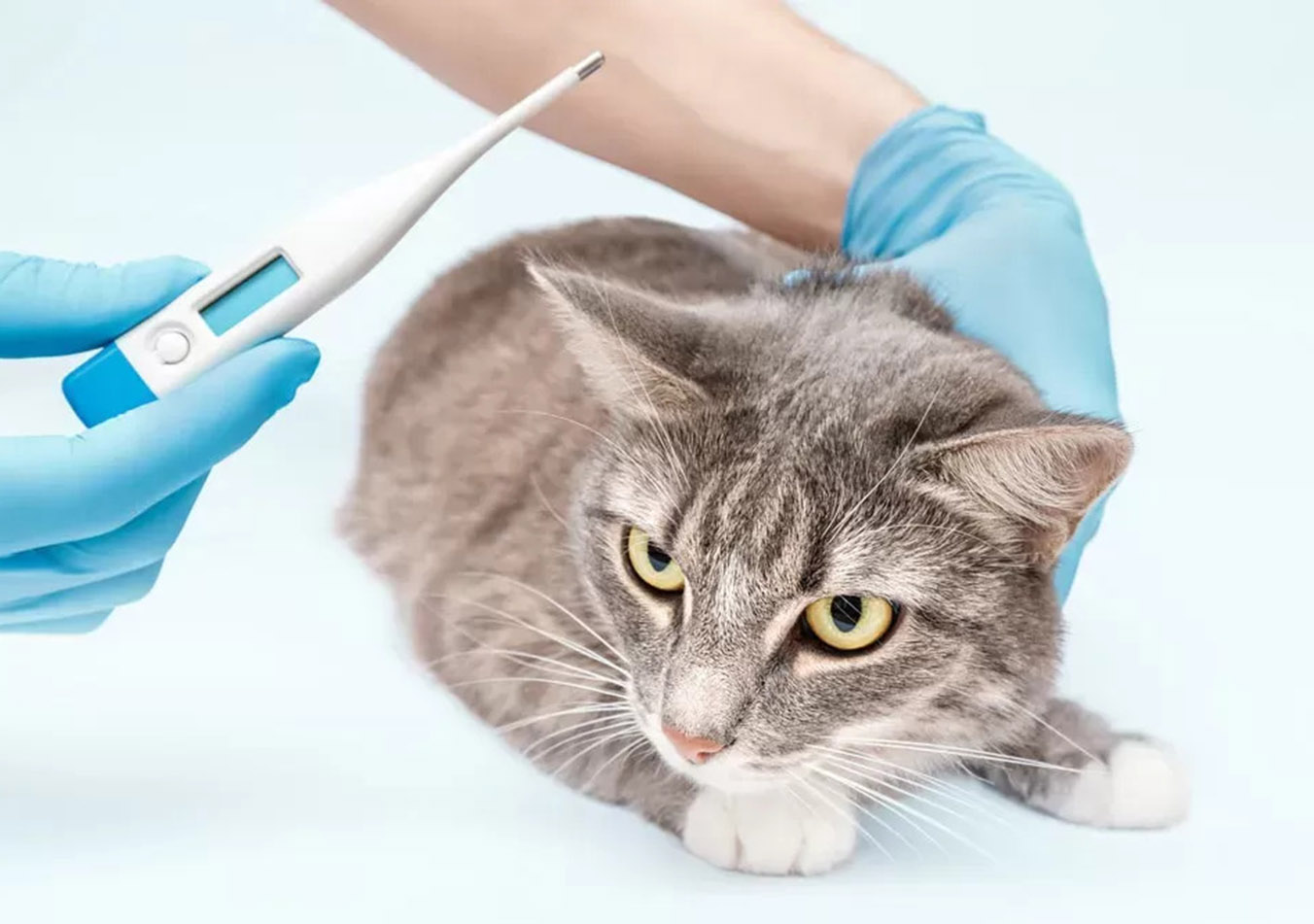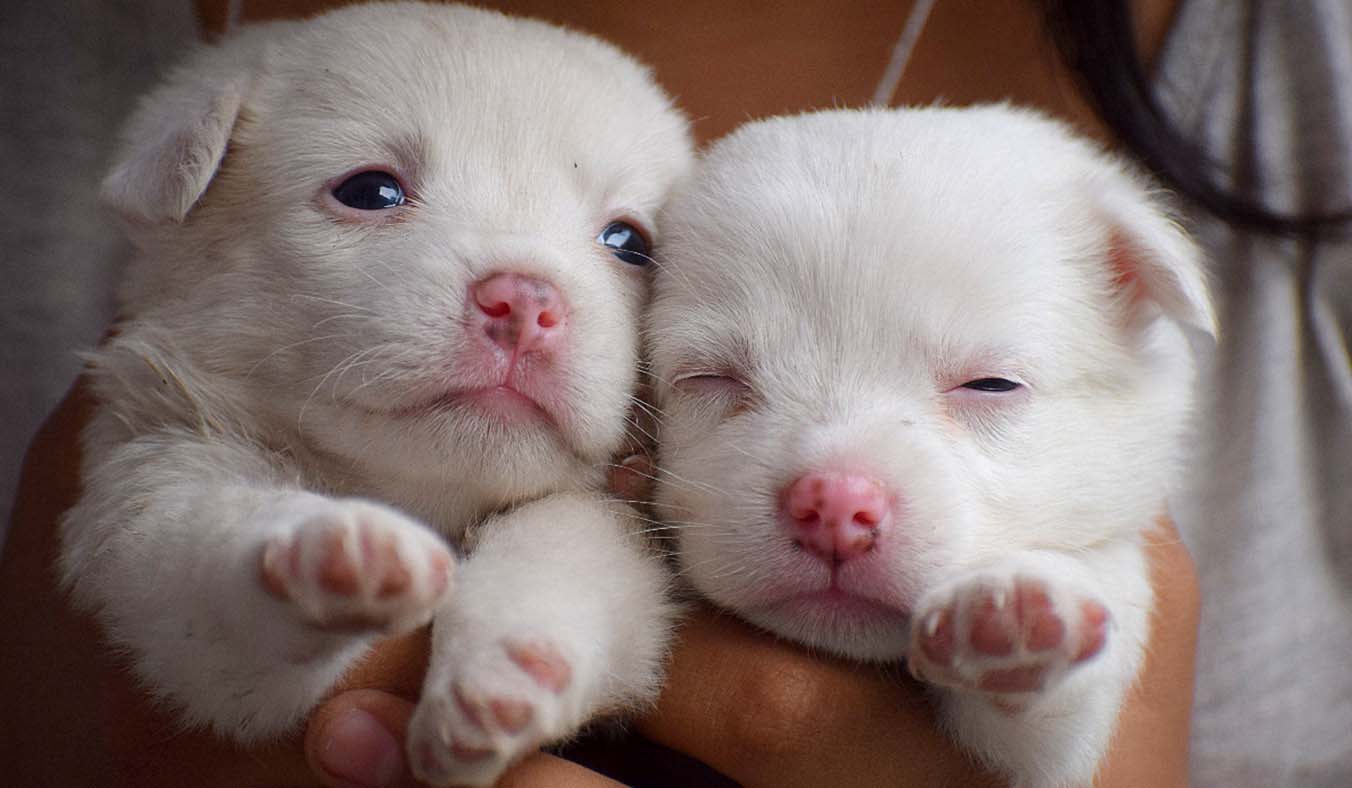Understanding your cat’s normal body temperature and the signs of fever or hypothermia can be crucial for taking immediate action if health issues arise. I will help you recognize the normal temperature of your cat and how to identify symptoms of fever and hypothermia. Learn how to take care of your pet’s health and ensure their well-being!
1. Normal Temperature in Cats
For a healthy cat, the normal body temperature generally ranges between 38°C (100.4°F) and 39°C (102.2°F). This is the typical temperature for most adult cats. For kittens, the temperature can be slightly higher, up to 39.5°C (103.1°F). It’s important to note that temperature can vary slightly depending on the time of day, the cat’s activity level, or if they’ve recently eaten. Keeping an eye on your cat’s temperature is especially important if you suspect health issues. If your cat is frequently sick, it might be helpful to buy a baby thermometer or a special pet thermometer and check their temperature regularly.
2. How to Recognize Fever in a Cat
Recognizing fever in a cat can be challenging, as cats are often masters at hiding discomfort. However, there are signs to watch out for:
- High body temperature – If a cat’s temperature exceeds 39.2°C (102.6°F), it may be a sign of fever. The use of a veterinary thermometer is essential to confirm the fever.
- Reduced activity – Cats with fever may be less inclined to play, eat, or exercise.
- Loss of appetite – Feverish cats may refuse food or drink less than usual, or they may experience excessive thirst.
- Lethargy – Cats with fever may seem sluggish, withdrawn, or less active than usual. They may also avoid interaction with people or other pets.
- Rapid breathing – In some cases, cats may breathe faster than normal, which could indicate overheating.
- Sneezing or coughing – Fever can sometimes come with cold-like symptoms, such as sneezing or coughing.
- Other accompanying symptoms – These could include vomiting, diarrhea, body pain, or other unusual behaviors, like adopting a painful posture or hiding excessively.
Treatment of Fever in Cats
The treatment of fever in cats depends on its cause. For mild fever not associated with a severe disease, methods can be used to alleviate symptoms, such as keeping the cat in a cool, well-ventilated room and ensuring it has plenty of fresh water. It’s also important to monitor the cat’s temperature and respond if it rises.
Cats with fever lasting more than 24 hours should be taken to the vet as soon as possible. The veterinarian may perform tests to determine the cause of the fever and take the necessary steps to treat the cat. If it is due to a bacterial infection, antibiotics may be prescribed. For viral infections, antiviral treatments may be necessary. In some cases, antipyretic medications may also be needed to relieve the cat’s discomfort. If the cat shows signs of dehydration, intravenous fluids may be required.
Never administer medication to your cat without consulting a veterinarian first. Certain pain relievers, such as acetaminophen, can be toxic to cats and cause severe health complications. The doses used for animals are different from those recommended for humans.
3. How to Take Your Cat’s Temperature
Taking your cat’s temperature is relatively simple but requires patience and gentleness. Start by disinfecting the thermometer and handling the cat calmly to avoid stress. Gently lift the cat’s tail and insert the thermometer’s tip into the anus. It’s recommended to apply a small amount of petroleum jelly to ease discomfort. Wait a few seconds for the thermometer to take an accurate reading. Once done, read the result. If the temperature exceeds 39°C (102.2°F) or drops below 38°C (100.4°F), it could indicate that your cat is unwell or stressed.
4. Low Temperature in Cats (Hypothermia)
Hypothermia, or a low body temperature, can occur in cats due to several factors, such as illness, stress, or infections. A temperature lower than 38°C (100.4°F) may indicate the onset of hypothermia.

Symptoms of Low Temperature in Cats
- Cold ears and paws – If the cat’s extremities are noticeably colder than usual, it may be a sign of hypothermia.
- Lethargy and apathy – Hypothermic cats may become sluggish, less responsive to stimuli, and generally less active.
- Shivering – Cats may tremble or shake as a way to raise their body temperature.
- Reduced response to stimuli – Cats may react slower or less effectively to external stimuli.
- Loss of appetite – Hypothermic cats may show reduced interest in food and water.
- Dehydration – Cats with low body temperatures may show signs of dehydration, such as dry mucous membranes and decreased skin elasticity.
- Painful posture or hiding – The cat may adopt a painful position or seek out places to hide, which can be a sign of distress.
Hypothermia in cats can be fatal, which is why it’s important to take immediate action. If you suspect your cat has hypothermia, contact your veterinarian promptly for advice and treatment. Untreated hypothermia can have severe consequences, so never ignore the symptoms.
5. How to Treat Hypothermia in a Cat
Treating hypothermia in a cat requires swift and careful action, especially if the cat’s body temperature is dangerously low. Here are the steps you can take:
- Move the cat to a warm, dry room – Avoid excessive heat, which could burn the skin. Instead, gently warm the cat using blankets, a thermos, or a heating pad wrapped in a towel.
- Warm the cat gradually – Do not attempt to reheat the cat too quickly, as rapid warming could cause thermal shock. Raise the cat’s body temperature slowly and steadily.
- Monitor the temperature – Check the cat’s temperature regularly. If it continues to drop or doesn’t rise, contact your vet immediately.
- Provide warm fluids – If the cat is conscious and able to drink, offer warm fluids, like boiled water, but don’t force them to drink if they don’t want to.
- Even if the cat improves – It is always advisable to consult your veterinarian to ensure proper recovery and rule out any underlying health issues.
6. Recommended Products for Monitoring and Treating Fever and Hypothermia
Here are some helpful products to manage your cat’s health, especially when it comes to monitoring their temperature and treating fever or hypothermia:
1. Pet Thermometers:
- Pet-Temp Digital Thermometer for Pets – A fast and accurate thermometer specially designed for pets, easy to use for both cats and dogs.
- MediTest Pet Thermometer – A reliable thermometer with a flexible tip, ideal for taking accurate temperatures in cats, especially for those sensitive to traditional thermometers.
2. Heating Pads and Blankets:
- K&H Pet Products Heated Pad – A safe and adjustable heating pad designed for pets, perfect for warming your cat during hypothermic episodes.
- PetSafe Heated Pet Bed – A self-heating pet bed that can help maintain your cat’s body temperature in cooler environments.
3. Pet Hydration and Supplements:
- Vet’s Best Hydration Support – A supplement designed to support hydration in cats, useful in cases of fever or hypothermia to prevent dehydration.
- PetNC Natural Care Electrolyte Powder – A natural electrolyte powder for pets that helps restore hydration levels in sick or recovering cats.
4. Pet Carrier for Vet Visits:
- AmazonBasics Folding Soft Pet Carrier – A comfortable and breathable carrier to transport your cat to the vet, especially in emergencies related to fever or hypothermia.

7. Where to Buy These Products in the UK and the US
You can find these essential products at these online platforms:
- Amazon UK/US: A wide range of pet thermometers, heating pads, hydration supplements, and more.
- Pets at Home (UK): A trusted UK-based platform for all your pet care needs, including thermometers, heating pads, and hydration products.
- Chewy (US): A popular pet supply store in the US offering a variety of pet health products and accessories.
Knowing your cat’s normal body temperature and how to identify signs of fever or hypothermia is essential for maintaining their health. Regular monitoring, particularly during illness or changes in behavior, can help catch problems early. If you suspect a fever or hypothermia, quick intervention and a trip to the vet can make all the difference. Ensure your cat’s health by investing in the right tools and taking timely action when needed.



